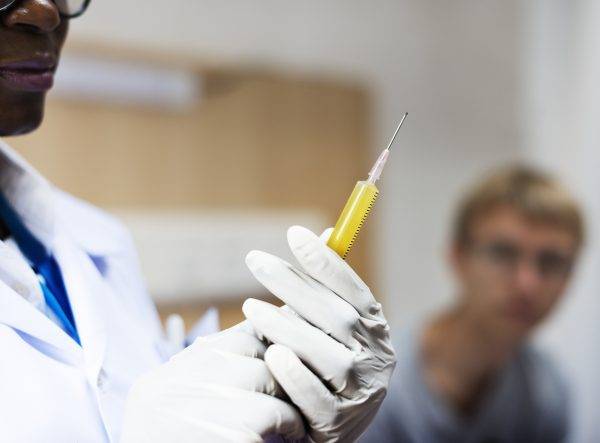Injection Phobia

The great news that a vaccine is on its way to help us in the fight against COVID-19 can, for some people, be extremely challenging. Some want to have the vaccine but the idea of having an injection strikes fear into their hearts. An injection phobia, or Trypanophobia to give it its correct title, can affect between 3.5-10% of the population. See Anxiety UK for further info. According to a recent study in the Journal of Advanced Nursing (McLenon and Rogers, 2019) 16% of adult patients avoid the flu jab through fear of needles.
How do phobias start?
There are numerous reasons for a phobia forming: it can be a result of a childhood experience of an injection or having been told to stay away from needles as they are dangerous. It could be a learned fear that we have picked up from someone else with an injection phobia or could be related to some trauma we’ve experienced or witnessed concerning needles.
How can Hypnotherapy help with an injection phobia?
Hypnotherapy can be a very effective treatment for phobias. It helps to re-programme the fear response, to re-process any difficult memories and induce a deep state of relaxation. This allows you to hypnotically rehearse many situations of feeling comfortable and at ease with having an injection. As well as hypnosis, I combine other effective treatments to deal with the emotions around the memories and fears.
Hints and tips when going for a jab
Should you have an appointment for a jab before you get to see your hypnotherapist here are some useful hints and tips:
- Remember this fear is quite common and there is no need to feel embarrassed. Mention to whoever is administering the injection that you have a fear, and they will help to put you at ease. They may be able to answer any questions you may have. Staff would prefer to know that you are worried so that they can help you feel more comfortable.
- If you tend to faint or fear that you might, then ask them to let you lie down to have the jab.
- Practising a behavioural technique called Applied Tension can also help in these circumstances as it helps to stop fainting by temporarily increasing blood pressure:
Sit in a comfortable place and tense the muscles in your arms, upper body, and legs. Hold the tension for 10-15 seconds until you start to feel a warmth rising in your face. Release the tension and let your body return to a normal state (neither tense nor completely relaxed). After 20-30 seconds repeat the process. Practice the whole process five times. Do this at least three times a day for a week prior to receiving the jab. Avoid tensing the muscles during the injection itself. Do not tense any part of your body where you have any medical problems.
- Practice deep breathing:
Breathe in so that your tummy (not your chest) rises (like a balloon filling with air). You will know when you are doing this correctly by placing your hands on your tummy with your fingertips touching on an out-breath. If you breathe in correctly, the fingertips should part. Breathe in through your nose, hold your breath for 3 seconds and then breathe out through your nose. Breathe out for longer than you breathe in.
- Distract yourself. Use distraction techniques to focus on something else. Examples include:
Visualisation – see yourself being in your favourite place/favourite holiday destination. Close your eyes and use all your senses to imagine it as if you are there. Notice what it looks like, sounds like, and feels like to be there.
Listen to music – perhaps bring some headphones with your favourite music.
Read a book or play a game on your phone
- Smile!
If you find an injection painful then a recent study (Pressman, et. al., 2020) showed that when smiling (a smile big and wide enough to lift the corners of your mouth, raise your cheeks and cause your eyes to crease) or grimacing was used during the procedure needle pain was reduced by 40%.
